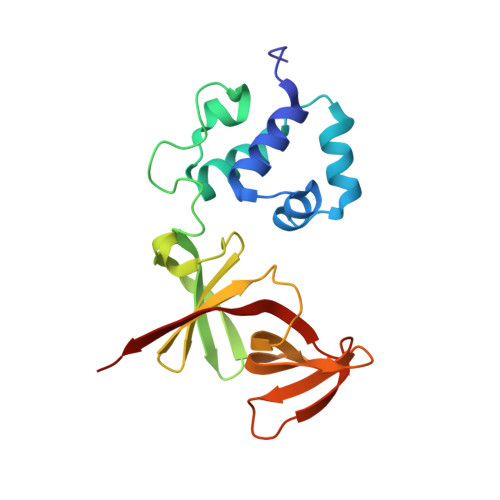The structural basis of cooperative regulation at an alternate genetic switch
Pinkett, H., Shearwin, K.E., Stayrook, S., Dodd, I.B., Burr, T., Hochschild, A., Egan, J.B., Lewis, M.(2006) Mol Cell 21: 605-615
- PubMed: 16507359
- DOI: https://doi.org/10.1016/j.molcel.2006.01.019
- Primary Citation of Related Structures:
2FJR, 2FKD - PubMed Abstract:
Bacteriophage lambda is a paradigm for understanding the role of cooperativity in gene regulation. Comparison of the regulatory regions of lambda and the unrelated temperate bacteriophage 186 provides insight into alternate ways to assemble functional genetic switches. The structure of the C-terminal domain of the 186 repressor, determined at 2.7 A resolution, reveals an unusual heptamer of dimers, consistent with presented genetic studies. In addition, the structure of a cooperativity mutant of the full-length 186 repressor, identified by genetic screens, was solved to 1.95 A resolution. These structures provide a molecular basis for understanding lysogenic regulation in 186. Whereas the overall fold of the 186 and lambda repressor monomers is remarkably similar, the way the two repressors cooperatively assemble is quite different and explains in part the differences in their regulatory activity.
- Department of Biochemistry and Biophysics, University of Pennsylvania School of Medicine, 37th and Hamilton Walk, Philadelphia, 19102, USA.
Organizational Affiliation:
















